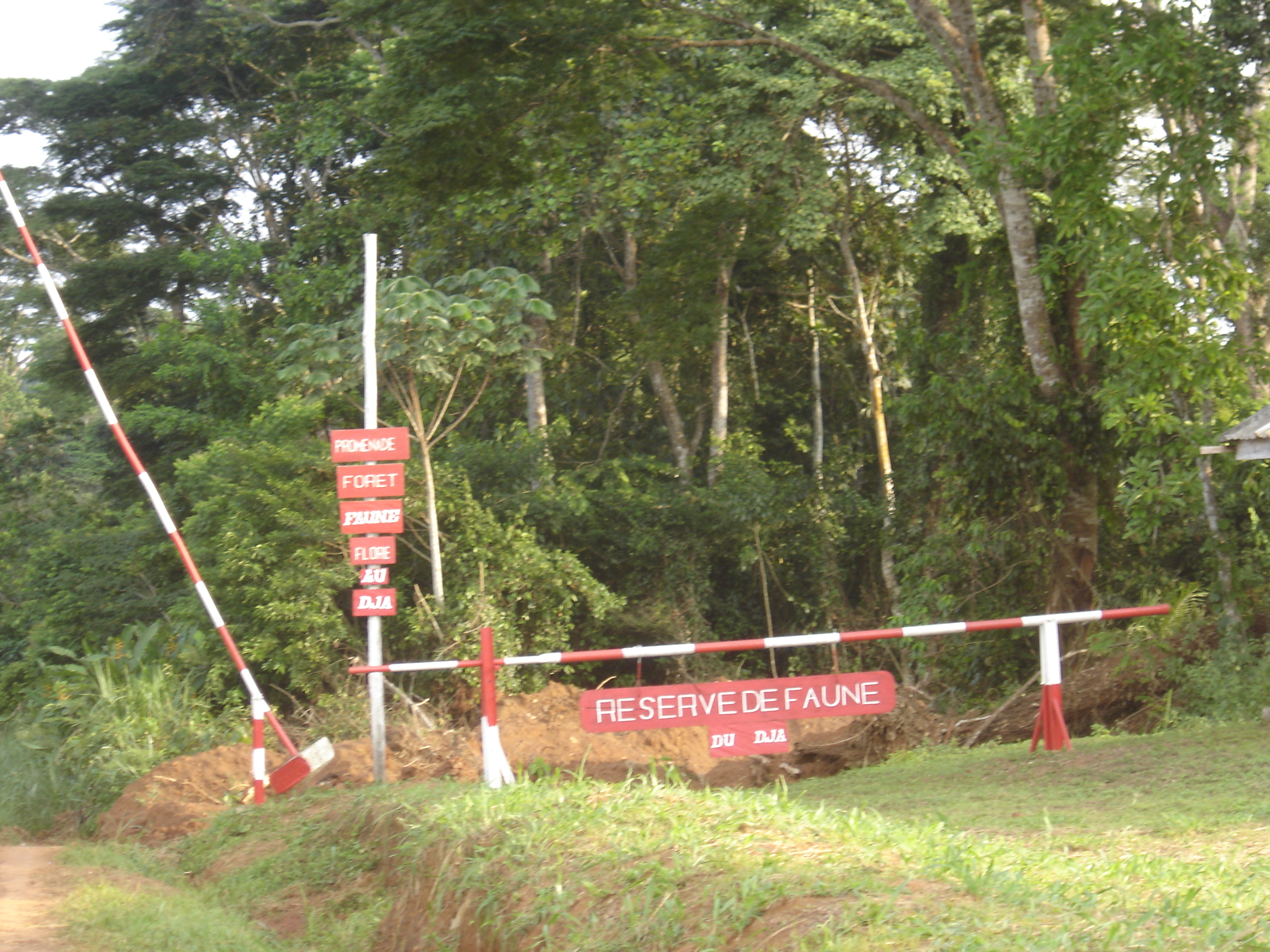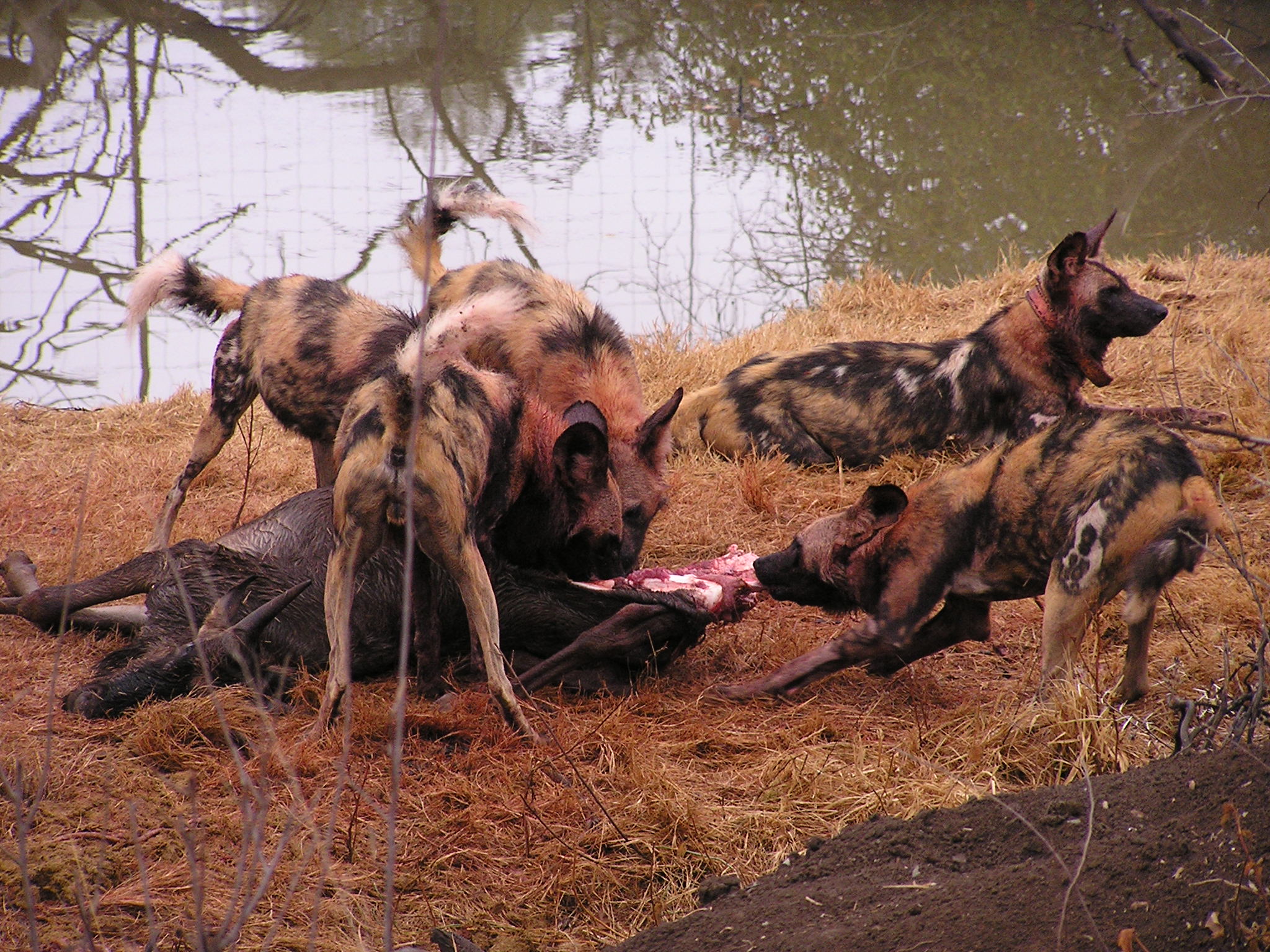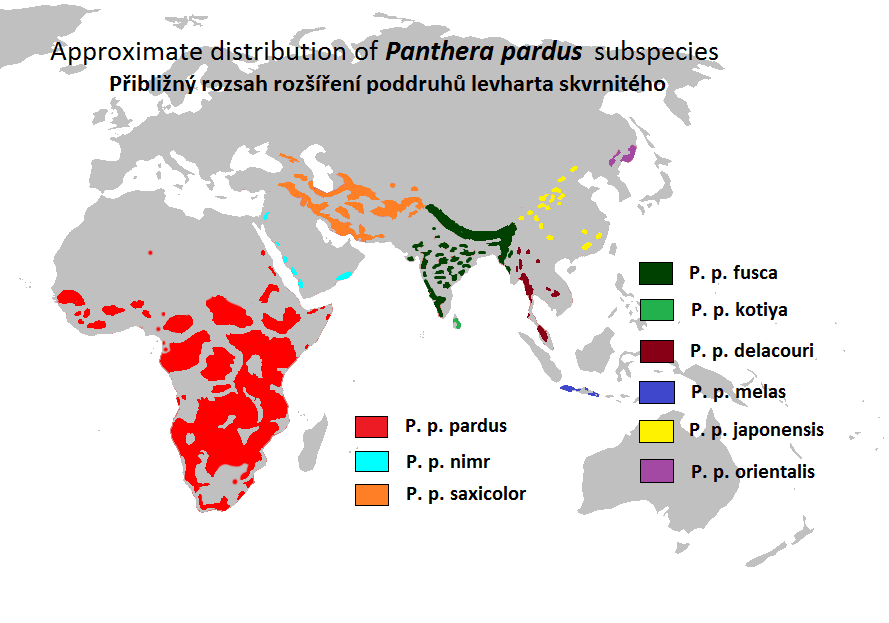|
Dja Faunal Reserve
Dja Faunal Reserve (), located in southeastern Cameroon, is a UNESCO World Heritage Site inscribed in 1987. Causes of inscription include diversity of species present in the park, the presence of five threatened species of mammal, and lack of disturbance within the park. It is managed by Dja Conservation Services (DCS), which is led by a conservator. The Reserve receives significant support for its management from many projects funded by international partners and supporters of conservation in Cameroon. Geology The Dja River almost completely surrounds the reserve and forms a natural boundary which encloses . History The Dja Faunal Reserve was created in 1950 and became a World Heritage Site in 1987 and it forms an integral part of the dense rain forests that make up the Congo Basin. It is one of the largest and best-protected reserves within the rainforest zones of Africa with around 90% of its area remaining undisturbed. The Dja Faunal Reserve is especially notable for the di ... [...More Info...] [...Related Items...] OR: [Wikipedia] [Google] [Baidu] |
Cameroon
Cameroon, officially the Republic of Cameroon, is a country in Central Africa. It shares boundaries with Nigeria to the west and north, Chad to the northeast, the Central African Republic to the east, and Equatorial Guinea, Gabon, and the Republic of the Congo to the south. Its coastline lies on the Bight of Biafra, part of the Gulf of Guinea, and the Atlantic Ocean. Due to its strategic position at the crossroads between West Africa and Central Africa, it has been categorized as being in both camps. Cameroon's population of nearly 31 million people speak 250 native languages, in addition to the national tongues of English and French, or both. Early inhabitants of the territory included the Sao civilisation around Lake Chad and the Baka people (Cameroon and Gabon), Baka hunter-gatherers in the southeastern rainforest. Portuguese discoveries, Portuguese explorers reached the coast in the 15th century and named the area ''Rio dos Camarões'' (''Shrimp River''), which became ''C ... [...More Info...] [...Related Items...] OR: [Wikipedia] [Google] [Baidu] |
Chimpanzee
The chimpanzee (; ''Pan troglodytes''), also simply known as the chimp, is a species of Hominidae, great ape native to the forests and savannahs of tropical Africa. It has four confirmed subspecies and a fifth proposed one. When its close relative the bonobo was more commonly known as the pygmy chimpanzee, this species was often called the common chimpanzee or the robust chimpanzee. The chimpanzee and the bonobo are the only species in the genus Pan (genus), ''Pan''. Evidence from fossils and DNA sequencing shows that ''Pan'' is a sister taxon to the Human evolution, human lineage and is thus humans' closest living relative. The chimpanzee is covered in coarse black hair but has a bare face, fingers, toes, palms of the hands, and soles of the feet. It is larger and more robust than the bonobo, weighing for males and for females and standing . The chimpanzee lives in groups that range in size from 15 to 150 members, although individuals travel and forage in much smaller grou ... [...More Info...] [...Related Items...] OR: [Wikipedia] [Google] [Baidu] |
Biosphere Reserves Of Cameroon
The biosphere (), also called the ecosphere (), is the worldwide sum of all ecosystems. It can also be termed the zone of life on the Earth. The biosphere (which is technically a spherical shell) is virtually a closed system with regard to matter,"Biosphere" in ''The Columbia Encyclopedia'', 6th ed. (2004) Columbia University Press. with minimal inputs and outputs. Regarding , it is an open system, with capturing |
Protected Areas Of Cameroon
The protected areas of Cameroon include national parks, wildlife sanctuaries, faunal reserves, and one flora sanctuary. Many protected areas in Cameroon are still in pristine condition, mostly because there is less tourism in Cameroon than other regions of Africa. According to reported statistics, there were ten protected areas from 1932 to 1960. Six protected areas were added between 1960 and 1980, five more were added between 1980 and 2004, and eight protected areas are under consideration within a final approval process. National parks 19 national parks have been established in Cameroon. * Bakossi National Park (293 km2), est. 2007 * Bénoué National Park (1,979 km2), est. 1968 * Bouba Njida National Park (2,114 km2), est. 1968 * Boumba Bek National Park (2,362 km2), est. 2005 * Campo Ma'an National Park (2609.44 km2), est. 2000 * Deng Deng National Park (687.35 km2), est. 2013 * Douala Edéa National Park (2715 km2), est. 2018 * Faro Nati ... [...More Info...] [...Related Items...] OR: [Wikipedia] [Google] [Baidu] |
Baka People (Cameroon And Gabon)
The Baka people, known in the Congo as Bayaka (''Bebayaka, Bebayaga, Bibaya''), are an ethnic group inhabiting the southeastern rain forests of Cameroon, northern Republic of the Congo, northern Gabon, and southwestern Central African Republic. They are sometimes called a subgroup of the Twa, but the two peoples are not closely related. Likewise, the name "Baka" is sometimes mistakenly applied to other peoples of the area who, like the Baka and Twa, have been historically called pygmies, a term that is now considered derogatory. Identity Baka people are all hunter-gatherers, formerly referred to as pygmies, located in the Central African rain forest. Having average heights of 1.52 meters (5 feet) as well as living semi-nomadic lifestyles, the Baka are often discriminated against and marginalized from society. They reside in southeastern Cameroon, northern Gabon and in the northern part of the Republic of Congo. In Congo, the Baka people are otherwise known as the Bayaka. Some ... [...More Info...] [...Related Items...] OR: [Wikipedia] [Google] [Baidu] |
Leopard
The leopard (''Panthera pardus'') is one of the five extant cat species in the genus ''Panthera''. It has a pale yellowish to dark golden fur with dark spots grouped in rosettes. Its body is slender and muscular reaching a length of with a long tail and a shoulder height of . Males typically weigh , and females . The leopard was first described in 1758, and several subspecies were proposed in the 19th and 20th centuries. Today, eight subspecies are recognised in its wide range in Africa and Asia. It initially evolved in Africa during the Early Pleistocene, before migrating into Eurasia around the Early–Middle Pleistocene transition. Leopards were formerly present across Europe, but became extinct in the region at around the end of the Late Pleistocene-early Holocene. The leopard is adapted to a variety of habitats ranging from rainforest to steppe, including arid and montane areas. It is an opportunistic predator, hunting mostly ungulates and primates. It relies on it ... [...More Info...] [...Related Items...] OR: [Wikipedia] [Google] [Baidu] |
African Forest Buffalo
The African forest buffalo (''Syncerus caffer nanus''), also known as the dwarf buffalo or the Congo buffalo, is the smallest subspecies of the African buffalo. It is related to the Cape buffalo (''Syncerus caffer caffer''), the Sudan buffalo (''Syncerus caffer brachyceros''), and the Nile buffalo (''Syncerus caffer aequinoctialis''). However, it is the only subspecies that occurs mainly in the rainforests of Central Africa and Western Africa, with an annual rainfall around . It has been proposed to represent a distinct species, ''Syncerus nanus''. Description The African forest buffalo is a small subspecies of the African buffalo. Cape buffaloes weigh , whereas African forest buffaloes are much lighter, weighing in at 250 to 320 kg (550–705 lbs).Korte 115 Weight is not the only differentiation, however; this subspecies has a reddish-brown hide that is darker in the facial area. The shape and size of the horns distinguish African forest buffalo from the other sub ... [...More Info...] [...Related Items...] OR: [Wikipedia] [Google] [Baidu] |
Forest Elephant
The African forest elephant (''Loxodonta cyclotis'') is one of the two living species of African elephant, along with the African bush elephant. It is native to humid tropical forests in West Africa and the Congo Basin. It is the smallest of the three living elephant species, reaching a shoulder height of . As with other African elephants, both sexes have straight, down-pointing tusks, which begin to grow once the animals reach 1–3 years old. The forest elephant lives in highly sociable family groups of up to 20 individuals. Since they forage primarily on leaves, seeds, fruit, and tree bark, they have often been referred to as the 'megagardener of the forest'; the species is one of many that contributes significantly to maintaining the composition, diversity and structure of the Guinean Forests of West Africa and the Congolese rainforests. Seeds of various plants will go through the elephant's digestive tract and eventually pass through in the animal's droppings (likely in a new ... [...More Info...] [...Related Items...] OR: [Wikipedia] [Google] [Baidu] |
Minkébé National Park
Minkébé National Park (French: ''Parc National de Minkébé'') is a national park in the extreme northeast of Gabon. It covers an area of 7,570 km2. The WWF recognized it as an area needing protection as early as 1989 and has been actively working towards protecting the forest since 1997. The park was established as a provisional reserve in 2000 but the Minkébé National Park itself was officially recognized and established by the Gabonese government in August 2002. It is recognized as a critical site for conservation by the IUCN and has been proposed as a World Heritage Site. History and management The Fang people once inhabited the Minkébé area but after becoming a protected area, the park now has no permanent human population. The name Minkébé derives from the Fang word ''minkegbe'', which means 'valleys' or 'ditches'. Historically, the park was under former French army control in the 1920s. In 1997, the WWF initiated a management program and established two main ... [...More Info...] [...Related Items...] OR: [Wikipedia] [Google] [Baidu] |
Gabon
Gabon ( ; ), officially the Gabonese Republic (), is a country on the Atlantic coast of Central Africa, on the equator, bordered by Equatorial Guinea to the northwest, Cameroon to the north, the Republic of the Congo to the east and south, and the Gulf of Guinea to the west. It has an area of and a population of million people. There are coastal plains, mountains (the Crystal Mountains (Africa), Cristal Mountains and the Chaillu Massif in the centre), and a savanna in the east. Libreville is the country's capital and largest city. Gabon's original inhabitants were the African Pygmies, Bambenga. In the 14th century, Bantu expansion, Bantu migrants also began settling in the area. The Kingdom of Orungu was established around 1700. France colonised the region in the late 19th century. Since its independence from France in 1960, Gabon has had four President of Gabon, presidents. In the 1990s, it introduced a multi-party system and a democratic constitution that aimed for a more tr ... [...More Info...] [...Related Items...] OR: [Wikipedia] [Google] [Baidu] |
Odzala-Kokoua National Park
Odzala-Kokoua National Park (or Odzala National Park) is a national park in the Republic of the Congo. The park was first protected in 1935, declared a biosphere reserve in 1977, and granted official designation by presidential decree in 2001. Odzala-Kokoua has approximately 100 mammal species, and one of the continent's most diverse primate populations. The nonprofit conservation organization African Parks began managing the park in collaboration with the Ministry of Forest Economy, Sustainable Development and Environment of the Republic of the Congo in 2010. Description Odzala-Kokoua is an approximately national park and biosphere reserve in northwestern Republic of the Congo, established in 1935. The park has preserved old-growth rainforest and variable terrain, ranging from tall hills to dense jungle and numerous glades. Odzala-Kokoua has dry forest, savanna, and rainforest ecosystems. The park is managed by African Parks in partnership with the Congolese government. Hist ... [...More Info...] [...Related Items...] OR: [Wikipedia] [Google] [Baidu] |
Republic Of Congo
The Republic of the Congo, also known as Congo-Brazzaville, the Congo Republic or simply the Congo (the last ambiguously also referring to the neighbouring Democratic Republic of the Congo), is a country located on the western coast of Central Africa to the west of the Congo River. It is bordered to the west by Gabon, to the northwest by Cameroon, to the northeast by the Central African Republic, to the southeast by the Democratic Republic of the Congo, to the south by the Angolan exclave of Cabinda, and to the southwest by the Atlantic Ocean. The region was dominated by Bantu-speaking tribes at least 3,000 years ago, who built trade links leading into the Congo River basin. From the 13th century, the present-day territory was dominated by a confederation led by Vungu which included Kakongo and Ngoyo. Loango emerged in the 16th century. In the late 19th century France colonised the region and incorporated it into French Equatorial Africa. The Republic of the Congo was es ... [...More Info...] [...Related Items...] OR: [Wikipedia] [Google] [Baidu] |







